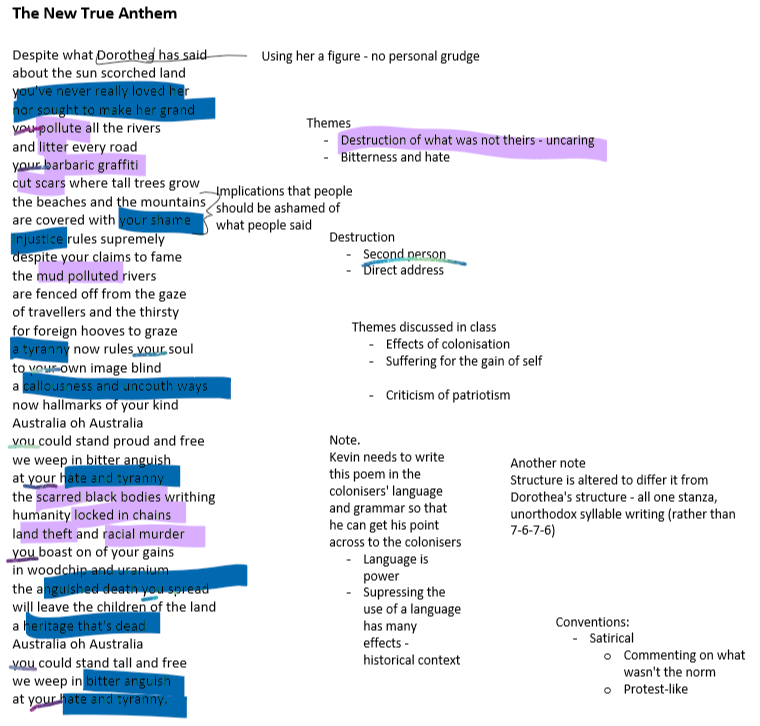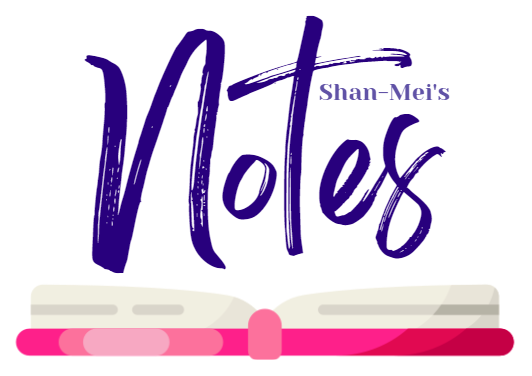




The New True Anthem by Kevin Gilbert critiques the actions of the European settlers and First Fleet, through its representation of destruction of land caused by settlers. The New True Anthem is a response Dorothea Mackellar’s poem, My Country, from the point of view of a First Nation’s person. Gilbert writes about the damage and pollution the Europeans did to their wildlife and country, and how Europeans ruined their culture. The text can be read as a protest to what Europeans have done to Australia and the land of the First Nations’ people.
Through the use of imagery and direct address, Gilbert portrays the theme of destruction of First Nations’ land caused by the Europeans. Gilbert describes what the Europeans did to their land, such as “[The Europeans] pollut[ing] all the rivers and litter[ing] every road.” “Pollute” and “litter” are words that imply damage and making unclean of property. The use of descriptive language by Gilbert clearly paints an image in the reader’s head of both what the Australian landscape looked like before, and what it looked like after the influence of European settlers. This encourages audiences to feel bad for the First Nations’ people who have been positioned to be in the victim’s position, and feel negatively towards the European settlers, who damaged the First Nations’ land. This also positions viewers to consider the lasting impact of the European settlers’ ways on the state of land and country. Gilbert also uses direct address to target the European settlers, making it clear that it was them who destroyed the First Nations’ country. “You” is repeated throughout the poem, accusing the Europeans of destroying their land, such as “pollut[ing] all the rivers,” and a “callousness and uncouth ways.” Gilbert also uses Dorothea Mackellar as a figure at the beginning of the figure, as the “representative” of the European race. This causes audiences to antagonise the Europeans through direct address, as in the poem, it sounds like Gilbert is scolding the Europeans. Because of this, readers are made to believe that Europeans ruined the country of the First Nations people. It also encourages the audience to believe that they should also be taking better care of the country of the First Nations people. Thus, through the use of imagery and direct address, Gilbert conveys the theme of destruction of the land owned by First Nations people.